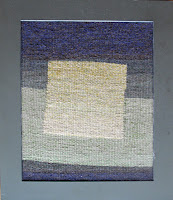
Pomona was also the name of a "Reform" shop, selling bio-organic fruits and vegetables, healthy oils, brown cane sugar, nuts, "Protifar" (protein supplement) and the original Swiss Bircher Müesli of my youth in the Dutch city of Amersfoort in the 1950-60's. It was run by a friendly elderly (in my memory) Jewish (I think they were ) couple with the family name of Tobias. They were somehow related to my stepfather. It's too late to ask.
Follow the label to an earlier article with Bircher Müesli and printmaker Margarete Donath.
Sculptor Aristide Maillol (if you happen to be in Paris visiting his charming museum is an absolute must) was also was intrigued by the goddess Pomona: he created several versions: in the nude and draped, with arms lowered and with arms stretched. Copies are kept and displayed in collections and museums all over the world: in Paris, Philadelphia, Amsterdam, Moscow etc.. and this version, with arms outstretched, is in Prague. I'll inform you about Maillol's gorgeous model in a minute.
My Pomona however does not seem to be involved with fruits or apples although the artist did relate her posture to holding or inspecting some branches above her head. Maybe it was to emphasize "certain parts" of her beautiful body, I mean, when wearing high heels would be not an obvious or logic choice, standing in a field, being naked and obviously being invited to model in a pastoral landscape.
The solution to the question "what is it ?", came to me recently: it is a copy of another version of (a detail of) a lithographic print by Emile René Menard (1862-1930) a French academic painter. Another version (in red chalk) is kept in the London British Museum. The detail, above right(now with fruits !) is from the original print below:
His lithographic drawing "Automne" was published in the first album of the illustre editions of Estampe Moderne in 1897.
The main figure is reaching and inspecting the fruit (oranges ?) and the title "Automne" is referring to ripe fruit and harvest. Possibly Menard choose the title to avoid naming and explaining the relation with an annoyingly bored looking second figure.
My personal opinion is that it would have been wiser to dismiss the competing for attention damsel on the left. It takes the attention from the gravitational centre of the original composition (the buttocks !). I suppose Menard has wrongly added the bored "cousin" to balance his composition. He shouldn't have, as my photoshopped version proves: much, much better, I'ld say: near perfect.
PS: I'ld love to find an affordable copy of the original print for my collection and to exhibit this story in the book. Offers welcomed.
The best description I found describing Menard he was an "intimist", a painter of intimate situations...... He'd studied under William Bougereau and was friends with Gustave Courbet and Lucien Simon. In this painting, composition-wise, he was smart not to disturb the centre of gravity (where the eyes come to rest) which im(not so)ho, is the classic updone red hair of the model.
 |
| Emile René Menard |
 |
| Arisitide Maillol |
This photo proofs the natural beauty of Maillols model Dina who was just 15 when Maillol "discovered her" and why she became his favorite model for so many of his sculptural master pieces.
And then I found this 1937 photograph by photographer Pierre Jamet (1910-2000) of Dina in a posture (arms raised) that could have inspired Menard for his "Automne", or my Pomona, had he not been dead for 7 years in 1937. Maillol however had still 7 years of creativity ahead of him in which he would create many master-pieces with Dina.
Maillol did several versions of a sculpture "Nue debout coiffant" (standing nude doing her hair). I have no idea if the old man was present sketching during this summery hozing of Dina (in Villeneuve sûr Auvers, not far from Paris) but I can imagine he was and created this drawing.
With the possibilities of the modern internet Dina's classic beauty immortalised by Maillol can be admired 360C., almost in 3D, combining the hundreds of good pictures from all over the world taken from every angle. But these will do here.
Dina also modelled for Pierre Bonnard and Henri Matisse and I think it could be Dina in here also, doing her hair.
----------------
All pictures borrowed freely from the Internet for friendly, educational and non commercial use only.



























